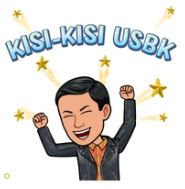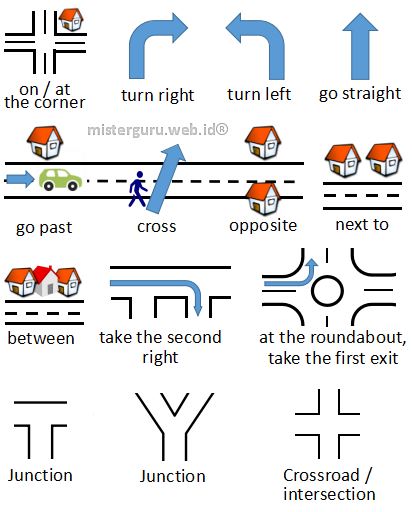| No. Soal | Kompetensi Dasar | Materi | Indikator Soal | Level Kognitif | Bentuk Soal |
|---|
| 1 | Menganalisis fungsi sosial, struktur, dan unsur kebahasaan teks news item lisan dan tulis dengan memberi dan meminta informasi terkait berita sederhana dari koran/radio/TV sesuai konteks penggunaan. | News Item (Pelajari di SINI. Lihat contoh soal di SINI) | Disajikan teks news item tertulis, siswa dapat menentukan pikiran pokok dari teks tersebut dengan benar. | Menganalisis (C4) | PG (Multiple Choice) |
| 2 | Menganalisis fungsi sosial, struktur, dan unsur kebahasaan teks news item lisan dan tulis dengan memberi dan meminta informasi terkait berita sederhana dari koran/radio/TV sesuai konteks penggunaan. | News Item (Pelajari di SINI. Lihat contoh soal di SINI) | Disajikan teks news item tertulis, siswa dapat melengkapi kalimat rumpang berisi informasi tersurat dari teks tersebut dengan benar. | Menyimpulkan (C2) | PG |
| 3 | Menganalisis fungsi sosial, struktur, dan unsur kebahasaan teks news item lisan dan tulis dengan memberi dan meminta informasi terkait berita sederhana dari koran/radio/TV sesuai konteks penggunaan. | News Item (Pelajari di SINI. Lihat contoh soal di SINI) | Disajikan teks news item tertulis, siswa dapat menentukan jawaban terhadap pertanyaan tentang informasi tersurat di dalam teks tersebut dengan benar. | Menyimpulkan (C2) | PG |
| 4 | Menganalisis fungsi sosial, struktur, dan unsur kebahasaan teks news item lisan dan tulis dengan memberi dan meminta informasi terkait berita sederhana dari koran/radio/TV sesuai konteks penggunaan. | News Item (Pelajari di SINI. Lihat contoh soal di SINI) | Disajikan teks news item tertulis, siswa dapat memilih pernyataan yang tidak sesuai dengan informasi tersurat dan tersirat di dalam teks tersebut dengan benar | Mengevaluasi (C5) | PG |
| 5 | Menganalisis fungsi sosial, struktur, dan unsur kebahasaan teks khusus berbentuk surat lamaran kerja dengan memberi dan meminta informasi terkait jati diri, latar belakang pendidikan / pengalaman kerja, sesuai konteks penggunaan | Job Application Letter (lihat contoh soal di SINI) | Disajikan teks surat lamaran pekerjaan tertulis, siswa dapat menganalisis informasi tersirat dari teks tersebut dengan benar | Menganalisis (C4) | PG |
| 6 | Menganalisis fungsi sosial, struktur, dan unsur kebahasaan teks khusus berbentuk surat lamaran kerja dengan memberi dan meminta informasi terkait jati diri, latar belakang pendidikan / pengalaman kerja, sesuai konteks penggunaan | Job Application Letter (lihat contoh soal di SINI) | Disajikan teks surat lamaran pekerjaan tertulis, siswa dapat menyimpulkan informasi tertentu di dalam teks tersebut dengan benar | Menyimpulkan (C2) | PG |
| 7 | Menganalisis fungsi sosial, struktur, dan unsur kebahasaan teks khusus berbentuk surat lamaran kerja dengan memberi dan meminta informasi terkait jati diri, latar belakang pendidikan / pengalaman kerja, sesuai konteks penggunaan | Job Application Letter (lihat contoh soal di SINI) | Disajikan teks surat lamaran pekerjaan tertulis, siswa dapat menentukan persamaan / sinonim sebuah kata di dalam teks tersebut dengan benar | Menyimpulkan (C2) | PG |
| 8 | Menganalisis fungsi sosial, struktur, dan unsur kebahasaan teks interaksi transaksional lisan dan tulis yang melibatkan tindakan memberi dan meminta informasi tentang petunjuk arah (direction) sesuai konteks dunia kerja | Asking for direction (pelajari di SINI) | Disajikan dialog rumpang tertulis berisi informasi petunjuk arah, siswa dapat melengkapi dialog tersebut dengan benar | Menganalisis (C4) | PG |
| 9 | Menganalisis fungsi sosial, struktur, dan unsur kebahasaan teks interaksi transaksional lisan dan tulis yang melibatkan tindakan memberi dan meminta informasi terkait pendapat dan pikiran, sesuai konteks. | Expressing thoughts/ opinions (pelajari di SINI) | Disajikan dialog rumpang tertulis tentang pemikiran/ pendapat, siswa dapat melengkapi dialog tersebut dengan benar | Menganalisis (C4) | PG |
| 10 | Menerapkan fungsi sosial, struktur, dan unsur kebahasaan teks interaksi transaksional yang melibatkan tindakan memberi dan meminta informasi terkait pesan sederhana lewat telephone (taking simple phone message) sesuai konteks dunia kerja | Handling/ making telephone calls (pelajari di SINI) | Disajikan dialog tertulis berisi percakapan telepon, siswa dapat menentukan konteks percakapan yang tersirat dari dialog tersebut dengan benar | Menganalisis (C4) | PG |
| 11 | Menerapkan fungsi sosial, struktur, dan unsur kebahasaan teks interaksi transaksional yang melibatkan tindakan memberi dan meminta informasi terkait pesan sederhana lewat telephone (taking simple phone message) sesuai konteks dunia kerja | Handling/ making telephone calls (pelajari di SINI) | Disajikan dialog tertulis berisi percakapan telepon, siswa dapat menentukan informasi tersirat di dalam dialog tersebut dengan benar | Menyimpulkan (C2) | PG |
| 12 | Menganalisis fungsi sosial, struktur, dan unsur kebahasaan teks prosedur lisan dan tulis dengan memberi dan meminta informasi terkait manual penggunaan teknologi dan kiat-kiat (tips), pendek dan sederhana, sesuai bidang keahlian dan konteks penggunaan | Procedural text (pelajari di SINI) | Disajikan teks prosedural tertulis, siswa dapat menentukan informasi tersirat di dalam teks tersebut dengan benar | Menganalisis (C4) | PG |
| 13 | Menganalisis fungsi sosial, struktur, dan unsur kebahasaan teks prosedur lisan dan tulis dengan memberi dan meminta informasi terkait manual penggunaan teknologi dan kiat-kiat (tips), pendek dan sederhana, sesuai bidang keahlian dan konteks penggunaan | Procedural text (pelajari di SINI) | Disajikan teks prosedural tertulis, siswa dapat mengidentifikasi informasi tersurat di dalam teks tersebut dengan benar | Menyimpulkan (C2) | PG |
| 14 | Menganalisis fungsi sosial, struktur, dan unsur kebahasaan teks prosedur lisan dan tulis dengan memberi dan meminta informasi terkait manual penggunaan teknologi dan kiat-kiat (tips), pendek dan sederhana, sesuai bidang keahlian dan konteks penggunaan | Procedural text (pelajari di SINI) | Disajikan teks prosedural tertulis, siswa dapat menentukan persamaan kata / sinonim dari sebuah kata di dalam teks tersebut dengan benar | Menyimpulkan (C2) | PG |
| 15 | Menganalisis fungsi sosial, struktur, dan unsur kebahasaan teks interaksi transaksional lisan dan tulis yang melibatkan tindakan memberi dan meminta informasi terkait pengandaian diikuti oleh perintah / saran, sesuai bidang keahlian dan konteks penggunaan | Conditional IF + imperative (pelajari di SINI) | Disajikan dialog rumpang tertulis berisi kalimat Conditional, siswa dapat melengkapi dialog tersebut dengan kalimat perintah yang benar | Menganalisis (C4) | PG |
| 16 | Menganalisis fungsi sosial, struktur, dan unsur kebahasaan teks interaksi interpersonal lisan dan tulis yang melibatkan tindakan menawarkan jasa serta menanggapinya sesuai konteks penggunaan | Offering a service (pelajari di SINI dan di SINI) | Disajikan dialog rumpang tertulis berisi penawaran jasa, siswa dapat melengkapi dialog tersebut dengan benar | Menganalisis (C4) | PG |
| 17 | Menganalisis fungsi sosial, struktur, dan unsur kebahasaan teks interaksi transaksional lisan dan tulis yang melibatkan tindakan memberi dan meminta informasi terkait hubungan sebab akibat sesuai konteks | Cause and Effect (pelajari di SINI) | Disajikan dialog rumpang tertulis, siswa dapat menganalisis hubungan sebab/akibat untuk melengkapi dialog tersebut dengan benar | Menganalisis (C4) | PG |
| 18 | Menganalisis fungsi sosial, struktur, dan unsur kebahasaan teks khusus berbentuk memo, menu, schedule dan signs dengan memberi dan meminta informasi terkait kegiatan sekolah atau tempat kerja sesuai konteks penggunaan dunia kerja | Travel schedule / checklist (lihat contoh soal di SINI) | Disajikan teks pesan / memo tertulis, siswa dapat menganalisis konteks dan tujuan dari teks tersebut dengan benar | Menganalisis (C4) | PG |
| 19 | Menganalisis fungsi sosial, struktur, dan unsur kebahasaan teks khusus berbentuk memo, menu, schedule dan signs dengan memberi dan meminta informasi terkait kegiatan sekolah atau tempat kerja sesuai konteks penggunaan dunia kerja | Travel schedule / checklist (lihat contoh soal di SINI) | Disajikan teks pesan/ memo tertulis, siswa dapat menyeleksi informasi yang tidak disebutkan di dalam teks tersebut dengan benar | Mengevaluasi (C5) | PG |
| 20 | Menganalisis fungsi sosial, struktur, dan unsur kebahasaan teks prosedur lisan dan tulis dengan memberi dan meminta informasi terkait manual penggunaan teknologi dan kiat-kiat (tips), pendek dan sederhana, sesuai bidang keahlian dan konteks penggunaan | Procedural text (pelajari di SINI) | Disajikan teks prosedural tertulis, siswa dapat menganalisis konteks dan tujuan dari teks tersebut dengan benar | Menganalisis (C4) | PG |
| 21 | Menganalisis fungsi sosial, struktur, dan unsur kebahasaan teks prosedur lisan dan tulis dengan memberi dan meminta informasi terkait manual penggunaan teknologi dan kiat-kiat (tips), pendek dan sederhana, sesuai bidang keahlian dan konteks penggunaan | Procedural text (pelajari di SINI) | Disajikan teks prosedural tertulis, siswa dapat menentukan urutan langkah di dalam teks tersebut dengan benar | Menganalisis (C4) | PG |
| 22 | Menganalisis fungsi sosial, struktur, dan unsur kebahasaan teks prosedur lisan dan tulis dengan memberi dan meminta informasi terkait manual penggunaan teknologi dan kiat-kiat (tips), pendek dan sederhana, sesuai bidang keahlian dan konteks penggunaan | Procedural text (pelajari di SINI) | Disajikan teks prosedural tertulis, siswa dapat menyeleksi informasi yang tidak sesuai dengan isi teks tersebut dengan benar | Mengevaluasi (C5) | PG |
| 23 | Menganalisis fungsi sosial, struktur, dan unsur kebahasaan untuk menyatakan dan menanyakan tentang pengandaian jika terjadi suatu keadaan / kejadian / peristiwa di waktu yang akan datang sesuai konteks penggunaan | Conditional sentence (pelajari di SINI dan di SINI) | Disajikan dialog tertulis berisi kalimat Conditional rumpang, siswa dapat melengkapi dialog tersebut dengan benar | Menganalisis (C4) | PG |
| 24 | Menganalisis fungsi sosial, struktur, dan unsur kebahasaan teks interaksi transaksional lisan dan tulis yang melibatkan tindakan memberi dan meminta informasi terkait pendapat dan pikiran sesuai konteks | Expressing thoughts / opinions (pelajari di SINI) | Disajikan dialog tertulis berisi pemikiran / pendapat, siswa dapat menentukan paraphrase yang sesuai dengan isi dialog tersebut dengan benar | Memahami (C2) | PG |
| 25 | Menganalisis fungsi sosial, struktur, dan unsur kebahasaan teks khusus berbentuk memo, menu, schedule dan signs dengan memberi dan meminta informasi terkait kegiatan sekolah atau tempat kerja sesuai konteks penggunaan dunia kerja | Memo (lihat contoh soal di SINI) | Disajikan teks memo tertulis, siswa dapat menentukan tujuan teks tersebut dengan benar | Menganalisis (C4) | PG |
| 26 | Menganalisis fungsi sosial, struktur, dan unsur kebahasaan teks khusus berbentuk memo, menu, schedule dan signs dengan memberi dan meminta informasi terkait kegiatan sekolah atau tempat kerja sesuai konteks penggunaan dunia kerja | Memo (lihat contoh soal di SINI) | Disajikan teks memo tertulis, siswa dapat mengidentifikasi penerima teks tersebut dengan benar | Memahami (C2) | PG |
| 27 | Menganalisis fungsi sosial, struktur, dan unsur kebahasaan teks khusus berbentuk memo, menu, schedule dan signs dengan memberi dan meminta informasi terkait kegiatan sekolah atau tempat kerja sesuai konteks penggunaan dunia kerja | Memo (lihat contoh soal di SINI) | Disajikan teks memo tertulis, siswa dapat menyimpulkan tujuan teks tersebut dengan benar | Memahami (C2) | PG |
| 28 | Menganalisis fungsi sosial, struktur, dan unsur kebahasaan teks khusus berbentuk memo, menu, schedule dan signs dengan memberi dan meminta informasi terkait kegiatan sekolah atau tempat kerja sesuai konteks penggunaan dunia kerja | Memo (lihat contoh soal di SINI) | Disajikan teks memo tertulis, siswa dapat menentukan persamaan / sinonim dari sebuah kata di dalam teks tersebut dengan benar | Memahami (C2) | PG |
| 29 | Menganalisis fungsi sosial, struktur, dan unsur kebahasaan teks biografi tokoh sesuai konteks penggunaan | Biography (lihat contoh soal di SINI) | Disajikan teks biografi tokoh tertulis, siswa dapat menentukan tujuan teks tersebut dengan benar | Menganalisis (C4) | PG |
| 30 | Menganalisis fungsi sosial, struktur, dan unsur kebahasaan teks biografi tokoh sesuai konteks penggunaan | Biography (lihat contoh soal di SINI) | Disajikan teks biografi tokoh tertulis, siswa dapat menentukan informasi tersirat dari teks tersebut dengan benar | Menganalisis (C4) | PG |
| 31 | Menganalisis fungsi sosial, struktur, dan unsur kebahasaan teks biografi tokoh sesuai konteks penggunaan | Biography (lihat contoh soal di SINI) | Disajikan teks biografi tokoh tertulis, siswa dapat menyeleksi informasi yang sesuai dengan isi teks tersebut dengan benar | Mengevaluasi (C5) | PG |
| 32 | Menganalisis fungsi sosial, struktur, dan unsur kebahasaan teks biografi tokoh sesuai konteks penggunaan | Biography (lihat contoh soal di SINI) | Disajikan teks biografi tokoh tertulis, siswa dapat menentukan rujukan sebuah kata di dalam teks tersebut dengan benar | Memahami (C2) | PG |
| 33 | Menganalisis fungsi sosial, struktur, dan unsur kebahasaan beberapa teks eksposisi analitis lisan dan tulis dengan memberi dan meminta informasi terkait isu aktual sesuai konteks penggunaan | Analytical Exposition (lihat contoh soal di SINI) | Disajikan teks eksposisi analitis tertulis, siswa dapat menentukan tujuan teks tersebut dengan benar | Menganalisis (C4) | PG |
| 34 | Menganalisis fungsi sosial, struktur, dan unsur kebahasaan beberapa teks eksposisi analitis lisan dan tulis dengan memberi dan meminta informasi terkait isu aktual sesuai konteks penggunaan | Analytical Exposition (lihat contoh soal di SINI) | Disajikan teks eksposisi analitis tertulis, siswa dapat memilih informasi yang tidak sesuai dengan isi teks tersebut dengan benar | Mengevaluasi (C5) | PG |
| 35 | Menganalisis fungsi sosial, struktur, dan unsur kebahasaan beberapa teks eksposisi analitis lisan dan tulis dengan memberi dan meminta informasi terkait isu aktual sesuai konteks penggunaan | Analytical Exposition (lihat contoh soal di SINI) | Disajikan teks eksposisi analitis tertulis, siswa dapat memilih rujukan sebuah kata di dalam teks tersebut dengan benar | Memahami (C2) | PG |
| 36 | Menganalisis fungsi sosial, struktur, dan unsur kebahasaan beberapa teks eksposisi analitis lisan dan tulis dengan memberi dan meminta informasi terkait isu aktual sesuai konteks penggunaan | Analytical Exposition (lihat contoh soal di SINI) | Disajikan teks eksposisi analitis tertulis, siswa dapat memilih persamaan /sinonim sebuah kata di dalam teks tersebut dengan benar | Memahami (C2) | PG |
| 37 | Menganalisis struktur, unsur kebahasaan, dan fungsi sosial teks factual report dengan menyatakan dan menanyakan tentang teks ilmiah faktual sederhana sesuai konteks pembelajaran | Factual report (pelajari di SINI) | Disajikan teks factual report tertulis, siswa dapat menentukan tema / pikiran pokok dari teks tersebut dengan benar | Menganalisis (C4) | PG |
| 38 | Menganalisis struktur, unsur kebahasaan dan fungsi sosial teks factual report dengan menyatakan dan menanyakan tentang teks ilmiah faktual sederhana sesuai konteks pembelajaran | Factual report (pelajari di SINI) | Disajikan teks factual report tertulis, siswa dapat menyeleksi informasi yang tidak terkandung di dalam teks tersebut dengan benar | Mengevaluasi (C5) | PG |
| 39 | Menganalisis struktur, unsur kebahasaan dan fungsi sosial teks factual report dengan menyatakan dan menanyakan tentang teks ilmiah faktual sederhana sesuai konteks pembelajaran | Factual report (pelajari di SINI) | Disajikan teks factual report tertulis, siswa dapat menyimpulkan isi paragraf di dalam teks tersebut dengan benar | Memahami (C2) | PG |
| 40 | Menganalisis fungsi sosial, struktur, dan unsur kebahasaan teks interaksi interpersonal lisan dan tulis yang melibatkan ucapan selamat bersayap (extended), dan responnya sesuai konteks | Congratulating someone (pelajari di SINI) | Disajikan dialog rumpang tertulis berisi ucapan selamat bersayap, siswa dapat melengkapi dialog tersebut dengan benar | Memahami (C2) | PG |












